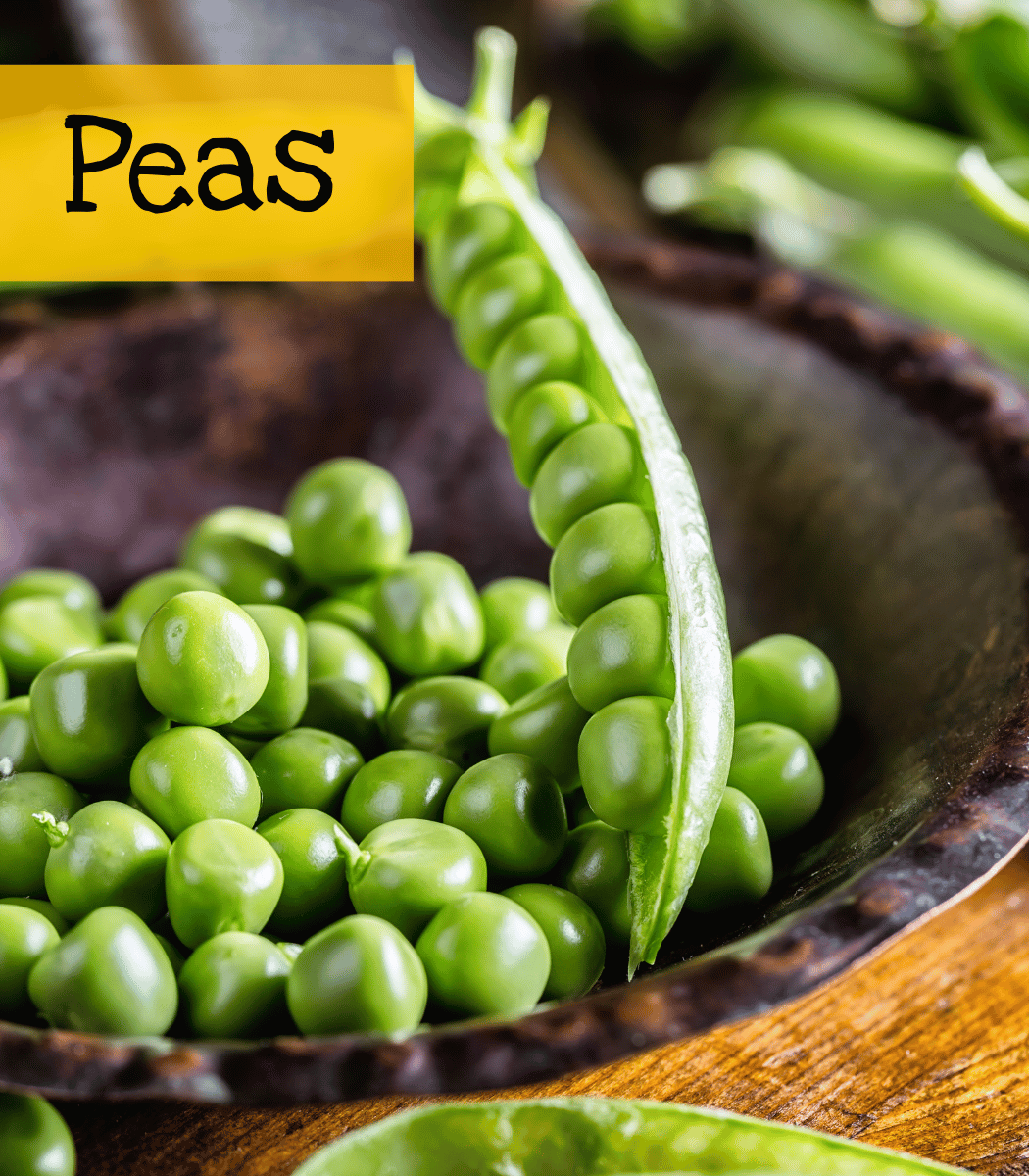
Pea
Peas are delicious raw in salads or cooked. This cool weather crop is easy to grow.
|
Oregon Sugar Pod II |
|
Pisum sativum |
|
Easy |
|
Easy |
|
2 years if properly stored |
|
Annual |
|
7-14 days |
|
Can be soaked overnight Optional: can add a legume inoculant (follow the packaged instructions) |
|
1 – 1.5 inches |
|
vine |
|
Full sun* |
|
60-98 Days |
|
Use a Trellis or tomato cage |
|
4.5” |
|
February, August |
|
Yes |

Growing Tips


2-3 plants per 12” container. Pole varieties will need a trellis or tall tomato cage. Bush varieties will also need support–You might have better success with a 5-gal bucket.
When to Start
Spring: Direct sow 4-6 weeks BEFORE the last average frost and when the soil is at least 45 F. (March 1-15 for Jefferson, GA)
Fall: The trick for a fall planting is to finish the harvest before a hard frost. To determine when to sow your fall crop, check the days to maturity for the pea varieties chosen and count backward from the expected first frost date. (Approximately Aug for GA.)
How to Start
Peas are a cool-weather crop. Make sure the soil is at least 45 F before putting your seed or plants in the soil. They like moist soil but avoid soggy soil as this may cause the seeds to rot. Direct sow into fertile, well-draining soil.
Sow to a depth of 1 to 1½ inches deep and 1 inch apart. Thin to 3-6 inches apart. Seeds can be soaked overnight to aid germination.
Care
Space your rows 18 inches apart. It’s also a good idea to fertilize at planting time. Even bush varieties may need some kind of support. A tomato cage should suffice for the bush varieties, while for the vining it would be better to use a trellis. Snow will not hurt emerging seedlings, but several days with temperatures in the teens might. This will also slow germination.
When thinking about plant care, remember that after you pick the first crop, peas like to be fertilized again. Keep the soil moist but not soggy as that can cause root rot and fungus problems. Use mulch to help retain moisture. Consider using a fabric screen for hot days or planting in partial shade as they don’t tolerate heat well.
Harvest
Harvest when the pods are plump and developed. (Some varieties will have smaller peas and may not look as plump.) Protect the vine by holding the vine and using the other hand to gently pull the pod off.
Pro Tip!
Incompatibles: Garlic, onions, and potatoes
Grows well with: Beans, cilantro, corn, cucumber, radishes, and spinach
Seed Saving

Isolation Distance
Self-pollinating peas do not readily cross—varieties separated by 50 feet are reasonably safe from crossing. For even greater certainty for preservation purposes, they can be bagged or caged.
Instructions
Allow pods to reach full size before harvesting the seeds—ideally, pick pods after they have dried on the vines. Peas are susceptible to mold if wetted after drying, however. If peas have reached full size, they can be harvested before they are dry if rains threaten. Then finish drying. After the pods are completely dry, they crumble easily to release the seeds.
Features
- Oregon Sugar Pod II: Vigorous 28-inch vines produce large crops of 4.5-inch-long edible pods. Resistant to wilt, powdery mildew, and the pea enation virus. Great for eating raw, freezing, and stir-fries.

A DANGER with saving pea seeds is rain, which can moisten seeds drying in their pods while still on the vine. Too much moisture during seed maturation lowers the viability and storage life of the finished seeds, and can even cause them to sprout or mildew while still on the vine.
The more you pick the more they will produce!
